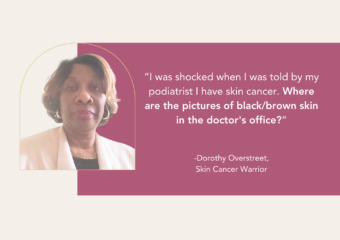Since 1979, The Skin Cancer Foundation has set the standard for educating the public and the medical community about skin cancer, its prevention by means of sun protection, the need for early detection and prompt, effective treatment. The Foundation is a nonprofit 501(c)(3) organization that relies on donor funds. Support our work.
We Can Help
Know the Signs
Melanoma Warning Signs & Images
How to spot this dangerous skin cancer early, when it’s easiest to treat.
GET THE FACTS
What is Basal Cell Carcinoma?
Learn more about the most common skin cancer and why you should never ignore it.
20%
Of Americans will develop skin cancer
More than 2 people die of skin cancer every hour
5+
sunburns doubles your risk for melanoma
melanoma early detection five-year survival rate (U.S.)
99%





